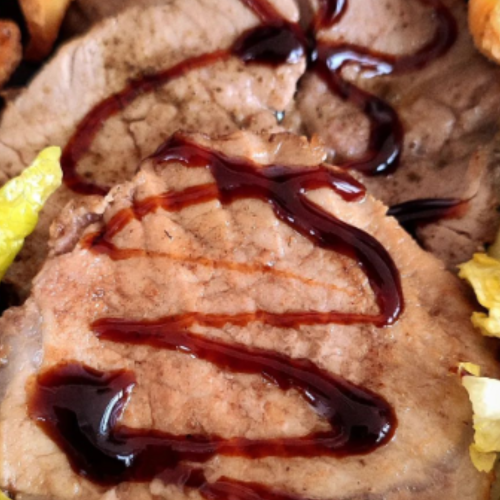Prepare the Pork Loin
Pat the pork loin dry with paper towels to ensure it roasts properly. Dry skin helps with achieving that nice crispy texture on the outside.
Using a sharp knife, score the fat cap of the pork loin with diagonal cuts about 1-inch apart, creating a crosshatch pattern. This will allow the seasoning to penetrate better.
Season the Meat
In a small bowl, mix the minced garlic, rosemary, thyme, lemon zest, olive oil, salt, and pepper.
Rub this mixture all over the pork, ensuring you massage it into the scored fat and sides. Based on my overall experience, giving the seasoning time to sink into the pork makes all the difference, so don’t rush this step.
Marinate (Optional but Recommended)
If you have time, marinate the pork in the fridge for at least 2 hours or even overnight. This gives the herbs and garlic more time to infuse the meat.
Preheat the Oven
Preheat your oven to 350°F (180°C).
Sear the Pork
Heat a large skillet over medium-high heat. Sear the pork on all sides for about 2-3 minutes per side until it's golden brown. This step locks in the juices and gives the roast a nice crust.
Transfer the pork loin to a roasting pan.
Add Wine and Broth
Deglaze the skillet you used for searing by adding the white wine. Let it simmer for about 1-2 minutes, scraping up any brown bits from the bottom of the pan. These bits add flavor to the sauce!
Pour the wine and broth mixture into the roasting pan with the pork.
Roast the Pork
Roast the pork in the oven for about 1 hour and 15 minutes (around 25 minutes per pound), basting occasionally with the juices in the pan.
Use a meat thermometer to check the internal temperature. It should reach 145°F (63°C) for medium doneness.
If using the optional Dijon mustard, brush it over the top of the pork during the last 15 minutes of roasting.
Rest the Meat
Once cooked, remove the pork from the oven and let it rest for 10 minutes before slicing. This helps the juices redistribute, making the meat more tender.
